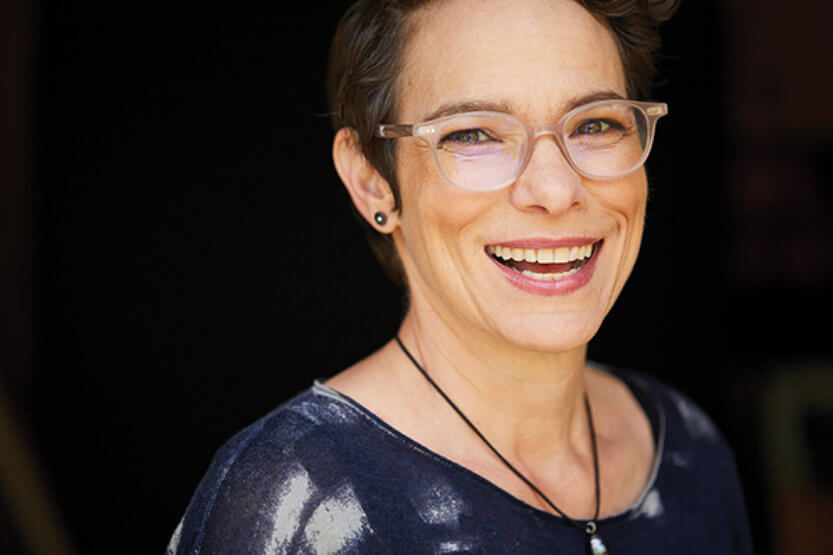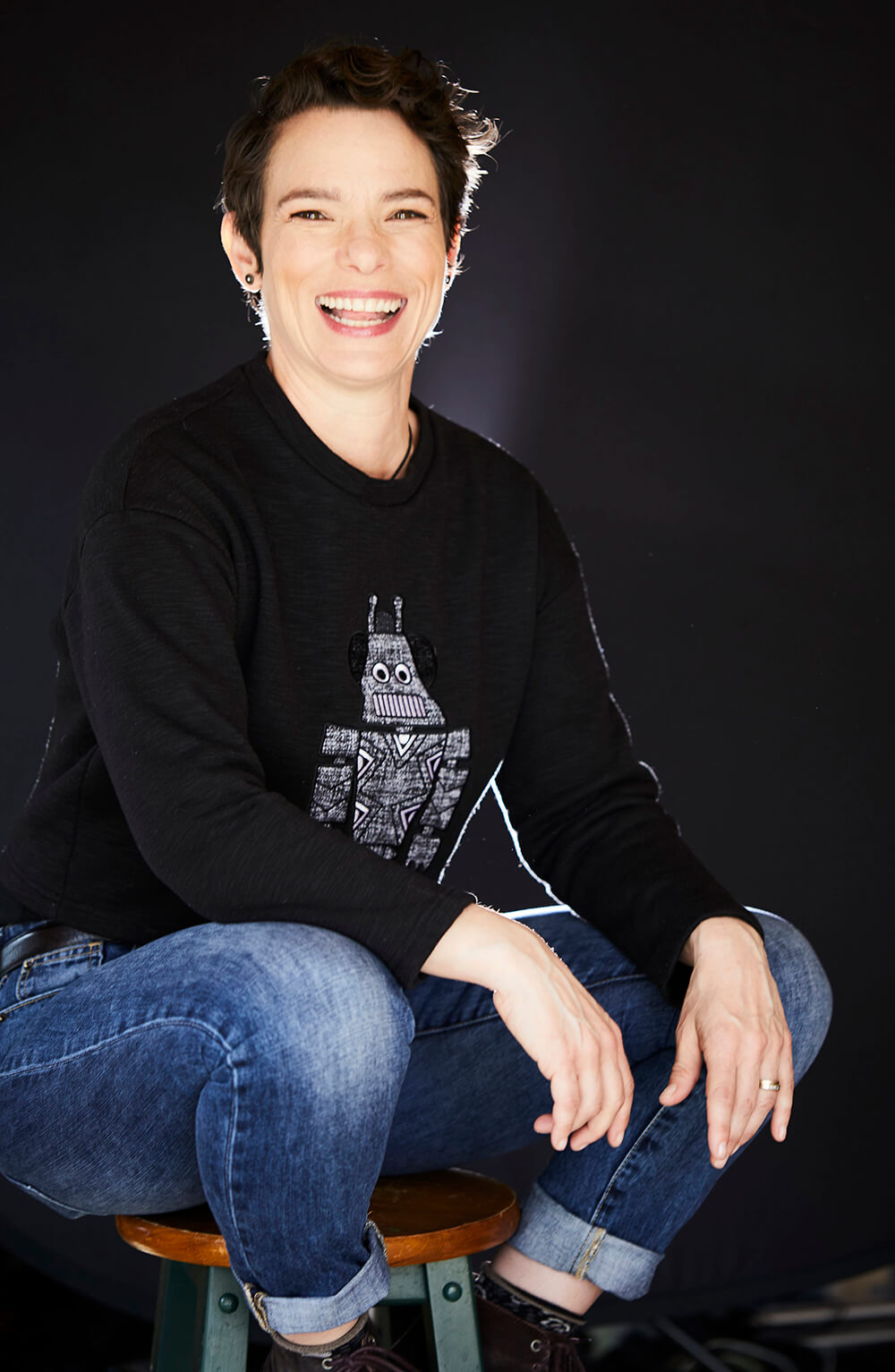Social Mediator
 “I draw all the inspiration for my work from online, but I struggle with a lot of my social media use because I’m very critical of it,” says Nancy Baym, senior principal researcher at Microsoft Research Lab–New England and author of several books. (Image by Kelly Davidson Studio)
“I draw all the inspiration for my work from online, but I struggle with a lot of my social media use because I’m very critical of it,” says Nancy Baym, senior principal researcher at Microsoft Research Lab–New England and author of several books. (Image by Kelly Davidson Studio) When Warner Bros. announced its fourth film set in the world of the dystopian thriller, The Matrix, it was a testament not only to our love of cutting-edge action movies, but to our predicament as a species struggling to live with the technology we creates. There’s an early scene in the series in which the protagonist, Neo, becomes increasingly horrified as he gazes into a mirror and watches his reflection change shape and composition. It’s his first realization that he’s actually lived his whole life in the Matrix—a massive online simulation of reality created by intelligent machines—and not in the real world.
The movie captured, in exaggerated form, a feeling of psychological vertigo that many of us have experienced ever since the internet emerged in the early 1990s. It’s a feeling that Nancy Baym, MA ’88 LAS, PHD ’94 LAS, a senior principal researcher at Microsoft Research Lab–New England, describes as looking into a fun house mirror.
“I remain convinced that [a fun house mirror] is the best metaphor for it,” says Baym, “because it doesn’t just reflect basic human dynamics, it distorts them—things that might be small seem huge.”
Her research on the online community began as a graduate student at Illinois. “And here I am now still looking at those same issues, but in the context of a big tech company,” she says.
Defining the online community
Baym came to Microsoft after an academic career at the University of Kansas and Wayne State University. Her U of I dissertation was the first-ever on the online community.
Founded in 2008, Microsoft Research Lab–New England was established to strengthen the company’s collaboration with the broader research community in order to understand and develop new computing and online experiences.
“Our primary duty is to advance the state of knowledge,” Baym says. “But the assumption is that [this research] will advance computing and thus advance Microsoft. My role has been to spark conversations and get people to think a bit differently.”
Whether in academia or corporate America, Baym has endeavored to spark those conversations in the general public through the publication of several successful books.

For her work, Baym has received an honorary doctorate from Gothenburg University in Sweden, and was awarded the Frederick Williams Prize for Contributions to the State of Communication and Technology from the International Communications Association. (Image courtesy of Kelly Davidson Studio)
Her book, Playing to the Crowd: Musicians, Audiences and the Intimate Work of Connection (NYU Press, 2018), explains how the rise of digital communication platforms has transformed artist-fan relationships into something closer to friendship or family, and how these new media have facilitated those connections through the active—and often required—participation of the artists and their fan base. Playing to the Crowd expands on the insights in her previous book, Personal Connections in the Digital Age (Polity, 2010), in which Baym provides frameworks for thinking critically about the roles of digital media in personal relationships.
Baym’s latest—Twitter: A Biography (NYU Press, 2020), co-authored with Jean Burgess at the Queensland University of Technology, documents Twitter’s early history (2007–09). “It’s a model of how we might tell the story of a platform that’s dynamic and ever-changing,” Baym says. “We take particular features and use them to tell the story—so there’s a chapter about the app itself, a chapter about the retweet, a chapter about the hashtag and so on.”
Dispelling dystopian fears
One of the main takeaways from Baym’s research is that, when any transformative technology comes along, there is both the hope that it’s going to fix everything and dystopian fears that it’s going to destroy everything.
“For example, everybody’s convinced that kids today are losing the ability to have conversations, but the empirical evidence just doesn’t support that,” Baym says. “Which isn’t to say [let the kids] plug into all screens and go wild; it’s much more complicated than that.”
Baym believes the internet has been a positive development for interpersonal relationships. It’s enabled people to stay in contact longer, with larger circles of people, and allowed family networks to stay connected more easily. “Think about all the kids who are queer or transgender,” Baym says, “who suddenly realize, ‘There are a whole bunch of me. Here are the terms I’m going to use to define myself.’”
Baym’s ultimate aim is to help people realize that they don’t actually know as much as they think they know about these ever-evolving technologies—and then give them the nomenclature and tools to make sense of what they’re living through.
Baym’s relationship to the fun house mirror of being “extremely online”—a term describing the 21st-century obsession with being constantly connected—hasn’t been quite as transformational for her. She’s managed to prevent the internet and social media from changing her for the worse. “I draw all the inspiration for my work from online, but I struggle with a lot of my social media use because I’m very critical of it, and I yet also take a lot of pleasure from it,” Baym says.
“Twitter is still my big public area,” she says. “There are a lot of things I hate about Twitter, but there’s a lot of content I weed out so that I can bear to be on it.”

